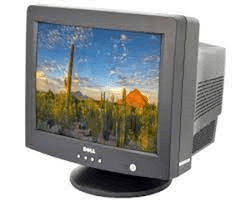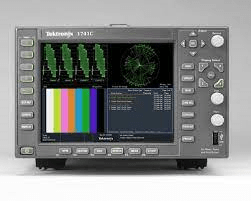What is Analog Monitor?
Analog monitors are primitive color monitors that were popularly used as television screens. The monitors were developed using cathode ray tubes, which were quite big. They were designed in such a way that they would be able to accept the signals with different frequencies. That's why they are also called multi-frequency monitors.

In contrast, digital monitors accept the digital signals from the video adapter. In digital monitors, the digital signals are converted into analog signals before they can represent the content on the screen. Analog monitors are conventional monitors; some analog monitors use digital signals to adjust various characteristics of the displays.
The success of Analog Monitor
The analog or CRT displays were the most popular monitors because they provide a high-quality color display at less price. They ruled the market for decades until the flat screen displays, and the LCDs were developed in the 1990s. Within a few years, the sales of digital monitors increased to that of analog monitors. They were still certain advantages of using analog displays, but the constant development in the Liquid Crystal Displays and a drop in the price led to the fall of analog displays.
Advantages of Analog Monitors
- It is easy to process analog signals than digital signals. They require less computational power. So, it is better to use an analog screen with limited computational power.
- They can produce more refined output. The monitors are used where you require to represent the changes occurring in the physical phenomenon such as sound, pressures, etc.
- They require less bandwidth than digital displays.
Disadvantages of Using Analog Monitors
- The biggest problem with the analog monitor was that they left a large footprint behind. The analog monitors used cathode ray tubes to produce the display, and it launched a shot of electrons in the tube to the rear of the phosphorous screen. The whole process takes place inside an inert gas-filled vacuum chamber. This is done to prevent the escape of radiation produced during the process.
- The set-up significantly increases the weight of the device. Even the smallest display could weigh up to 35 pounds.
- The cathode ray tube was responsible for producing the content to be displayed on the screen. The tube was lined with lead so that the radiation produced during the process is not leaked. Despite all these preventive measures, some radiation would always leak, which was not good for the quality of the display and as well as the health of the user.
- Additional add-on anti-radiation screens were developed to reduce the frontal radiation; this prevents causing eyestrain to the users that worked hours on the system.
- The computer can only understand the languages of simple ones and zeroes. The analog monitors use an analog signal to transmit information about the display. The systems that use analog monitors have an analog graphic card installed inside the system's CPU. The responsibility of the display card was to convert the digital signals from the computer into analog signals and transmit the signal further to the monitor. The LCD monitors were capable of using digital signals only. This reduces the need for the additional graphic card used to translate the digital signals into analog.
A brief history of Analog Displays
The initial Analog Display was monochromatic; it had a black background and could only represent the textual content on the screen. The text was represented in green color.
It was in 1981 when the constantly improved color technology was finally able to accommodate a large color palette and could support high resolutions images and videos.
In the 1990s, when finally, the LCDs were introduced into the market, the analog monitors provided at least 1024 X 768 resolutions with an infinite color palette.
Analog Connectors
The system sends a signal containing all the information about the content to be displayed on the monitor. These signals can either be in analog or digital format.
In analog monitors, the signal should be continuous electric signals or in the form of analog waves. The type of connection that allows the transmission of such a signal is called a VGA connection. It has a separate video adapter that converts digital data from the system into digital signals. The converted signals are transmitted to the monitor. It is also known as the graphic card or the graphic adapter and s generally located inside the CPU.
Once the data from the computer is converted into analog signals, the analog waves are transmitted to the monitor through a VGA cable. The cable is connected to the backside of the system. It is called the D-sub connector and constitutes 15 pins arranged in the three rows. Each pin is responsible for transmitting different information about the display. There are as follows:
1. Red out
2. Green out
3. Blue out
4. Unused
5. Ground
6. Red return
7. Green return
8. Blue return
9. Unused
10. Sync return
11. Monitor ID 0 in
12. Monitor ID 1 in or data from the display
13. Horizontal Sync out
14. Vertical Sync
15. Monitor ID 3 in or data clock
The VGA connector has three separate lines for sending the signals for red, green, and blue colors.
Application of Analog Monitors
Though the technology of using analog monitors has grown outdated. There are still various implementations of analog monitors. Some of the applications of the analog monitors are as follows:

RGB Monitor
In RGB Monitors, analog signals are used as it allows clear distinctions between the red, green, and blue signals. It is used to display the seismographic images of an area or the fields where the content is displayed exclusively using these three colors and requires a clear distinction between them.
Multi-frequency displays
These kinds of monitors can display all the channels within a specified range of frequencies. The user can adjust the frequency from the given range. These displays are used in powder metallurgy. They are used for producing high-quality metal powders. The displays based on this principle are highly reliable. These screens can be used in other fields, such as the food industry.